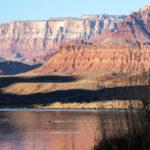
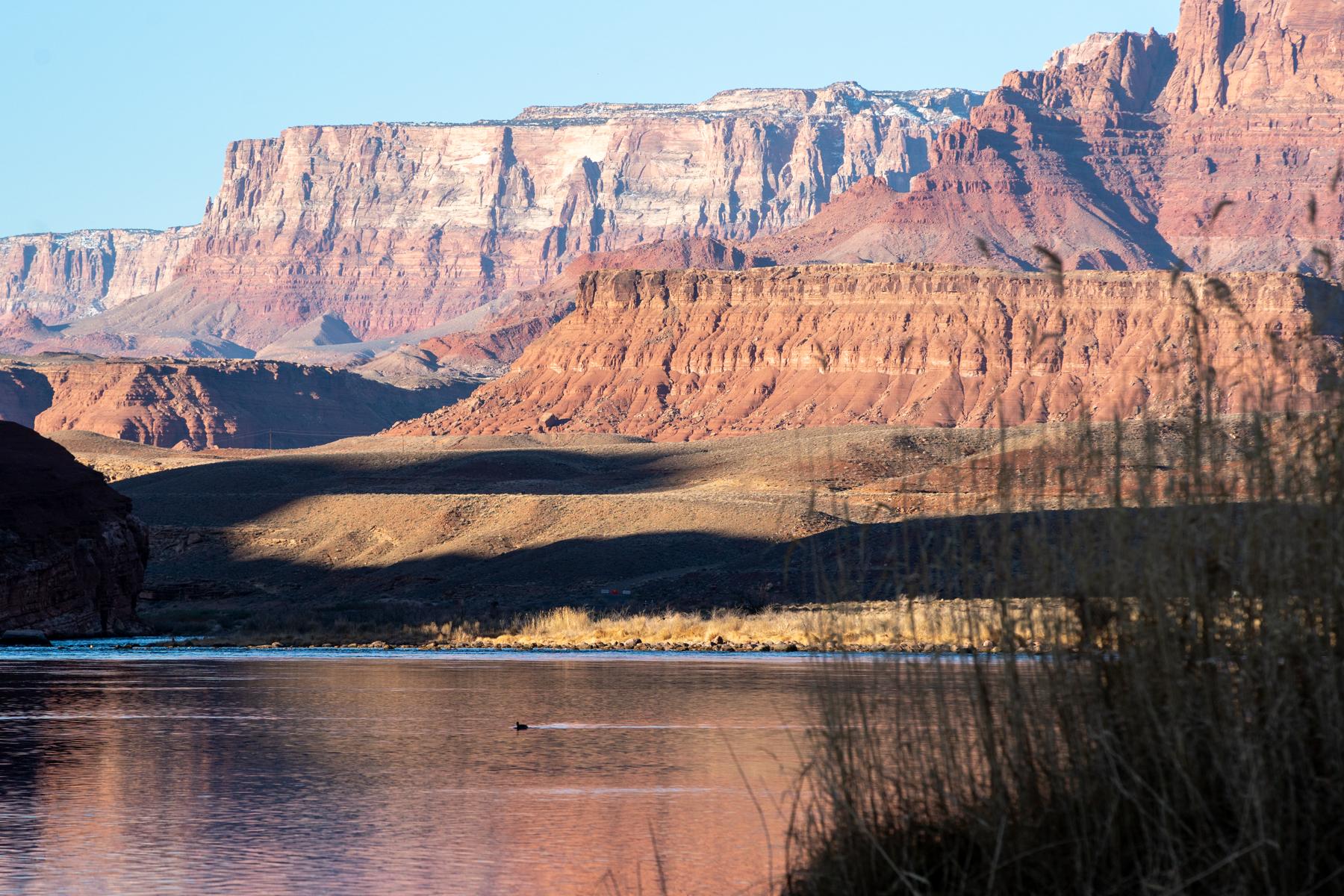
Climate change and overuse are depleting the Colorado River and threatening the future of the American Southwest. Federal scientists estimate that the river has declined 20 percent over the last century, and they predict it will drop further if the region continues to warm.

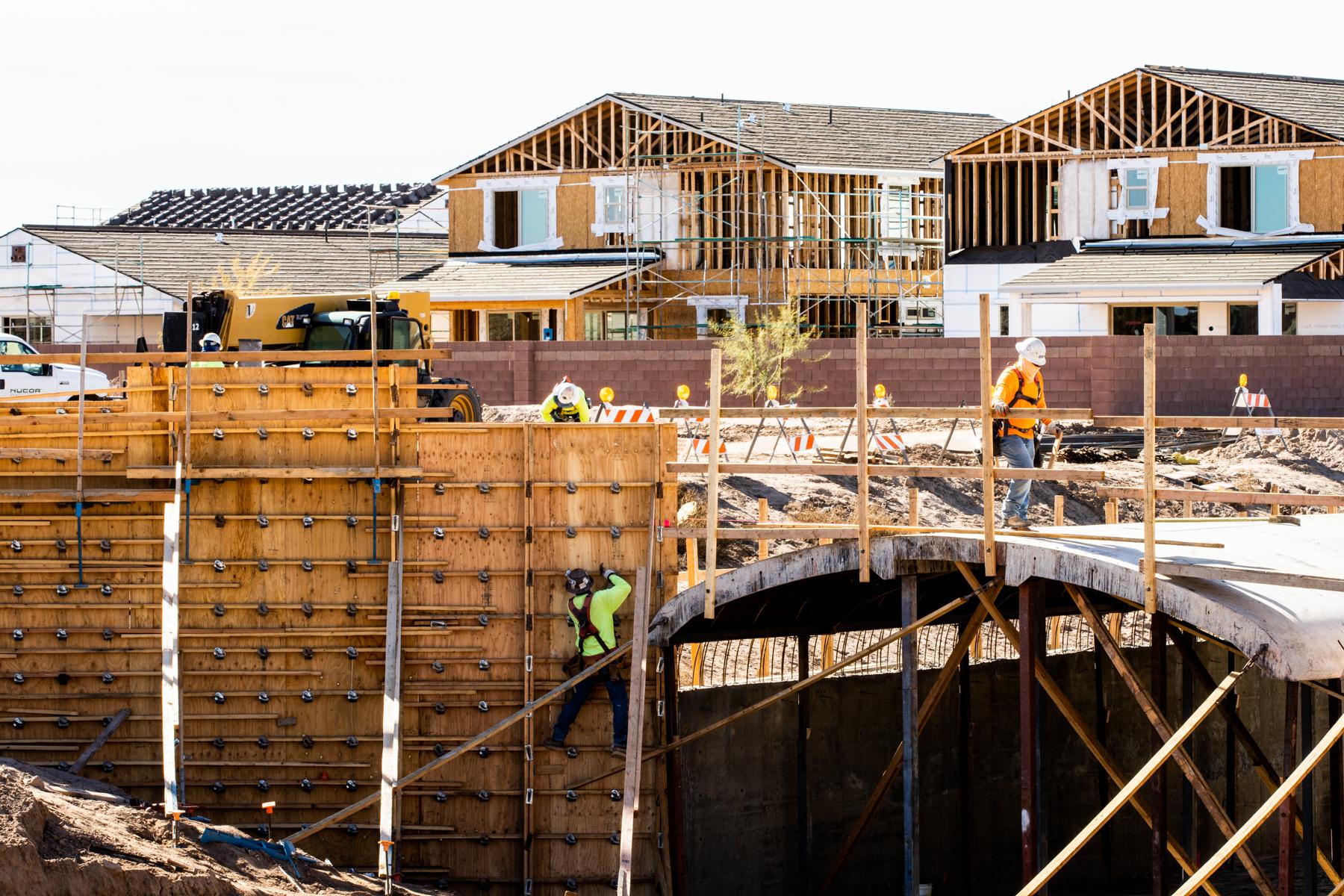
Demand for Colorado River water has not dropped to match the dwindling supplies: Cities and suburbs that rely on the river have grown exponentially. Water-hungry industries and a desert region that grows and ships food all over the world continue to expand.

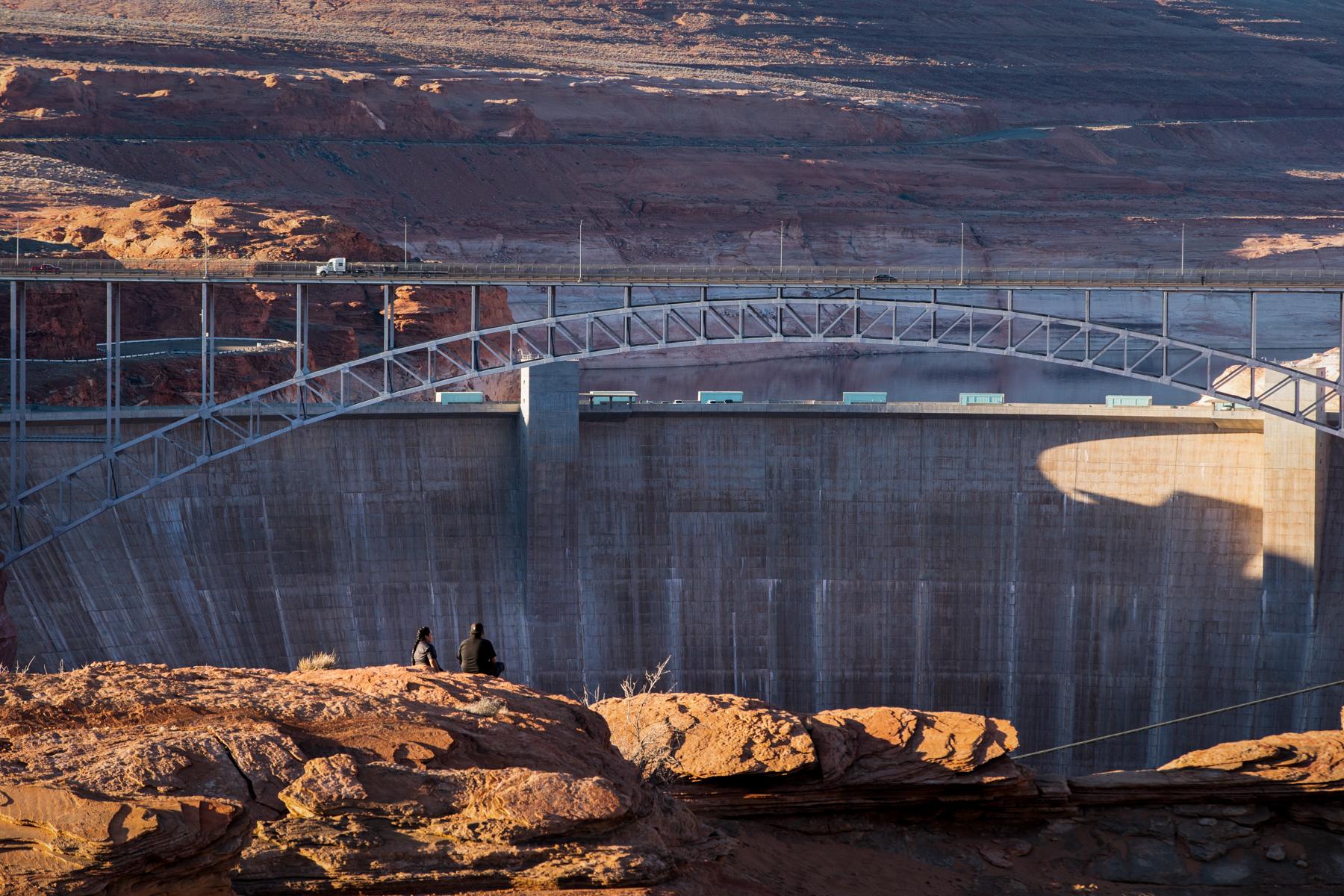
The 20th century was a time for building dams and diverting water across the region to power its growth. Now, water managers and some residents of the Southwest are re-examining our relationship with water to figure out how we can continue to live — and thrive — here with less.

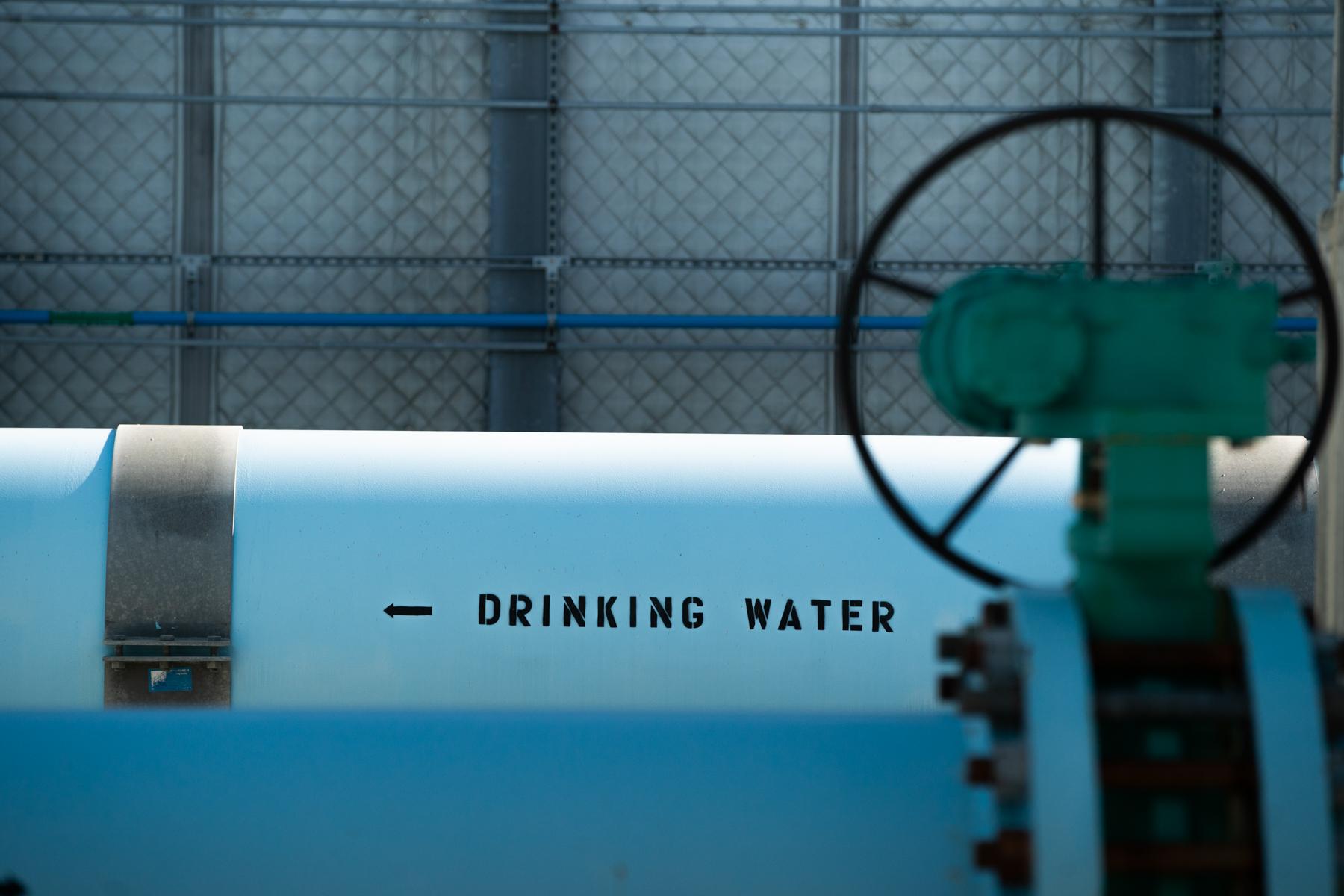
How might we save the Colorado River?
From desalinating seawater to ripping out grass and changing crops, here are some of the boldest and most crucial ideas.
By Joe Wertz, Rachel Estabrook and Sarah Bures
Listen to Parched, a podcast about people who rely on the river that shaped the West – and have ideas to save it.
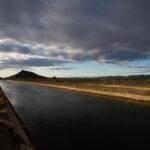
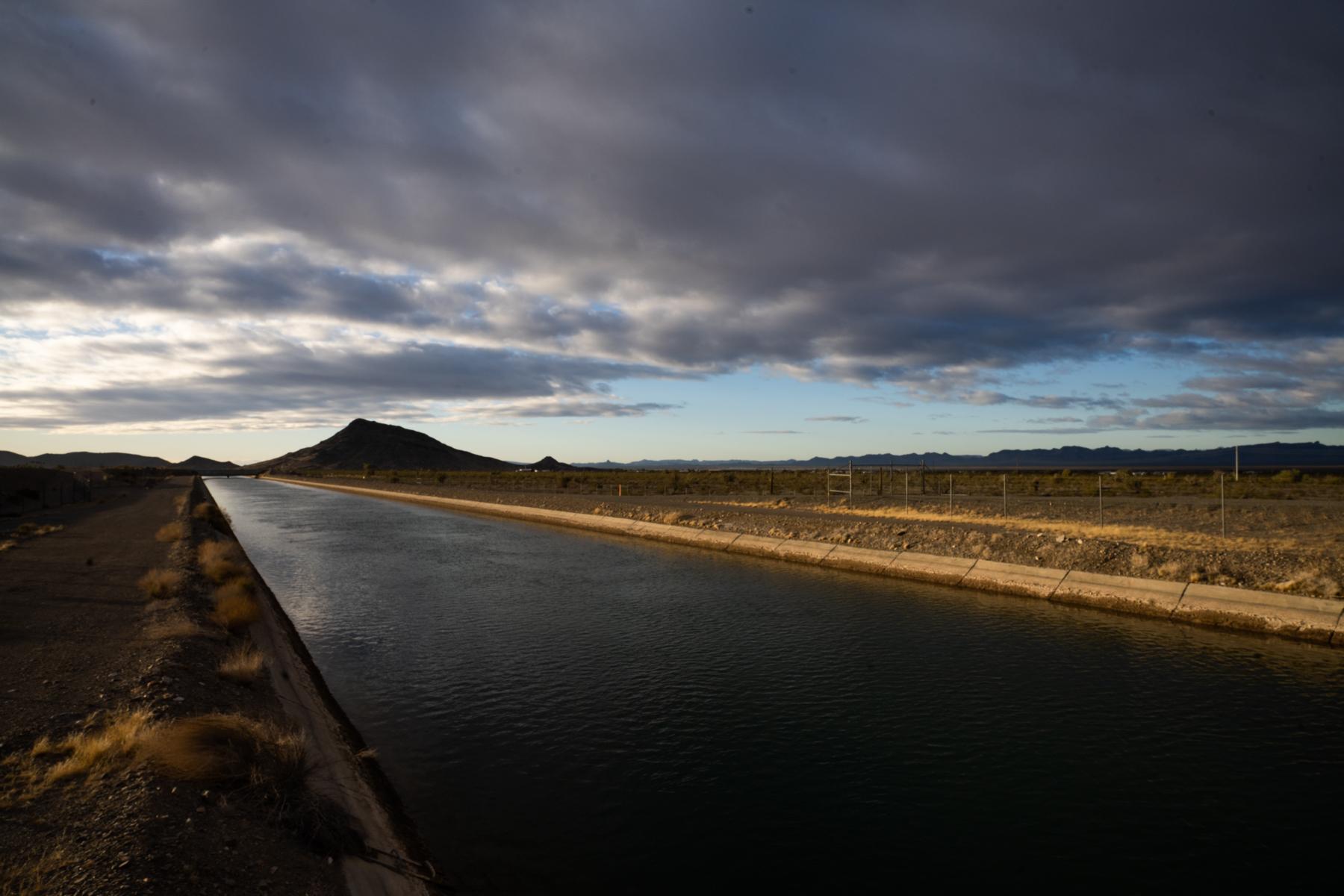
What if we moved water from the Mississippi River?
As the Colorado River gets overused, replenishing its dwindling water supplies could be as straightforward as piping in water from other U.S. river basins.
This idea of moving water from places where it's considered plentiful to dry regions that need it isn’t new. In the 1960s, a billionaire California industrialist pitched his idea for the North American Power and Water Alliance, which imagined a continent-sized network of water pipelines in the spirit of the U.S. highway system.
There are lots of different versions of this idea proposed to prop up the Colorado River. These include tapping the Missouri River, a tributary of the Columbia River in the Pacific Northwest or the Bear River in Utah.
But moving water — or floodwater — from the Mississippi River is the idea that has gained the most public attention. It has been touted as a possible solution to accommodate the Colorado River drought by people like comedian Bill Maher and Republican Arizona state legislator Tim Dunn.
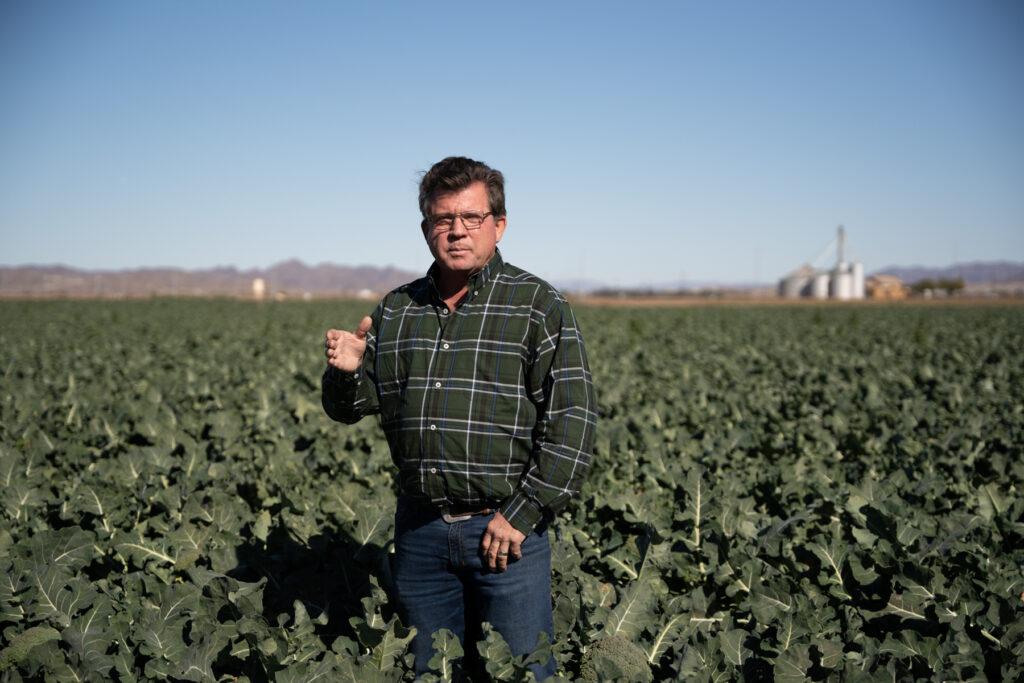
Wildfire, water and wolves: Sign up for our weekly Climate newsletter.
The federal government studied some of the water-moving proposals in 2012 and concluded that the two main drawbacks are cost and time.
The U.S. Bureau of Reclamation estimated it would cost at least $14 billion and take 30 years to build the infrastructure to bring Mississippi River water to the Colorado River Basin. Much of that cost would come from the infrastructure itself, from acquiring the land and rights-of-way to building the pipelines, pumps and other equipment to move water across the country.
But Edie Zagona, a water resources engineer at the University of Colorado, said that was just a guess. Given that it’s been over a decade since the agency released its estimate, Zagona said building a pipeline would likely cost at least $30 billion.
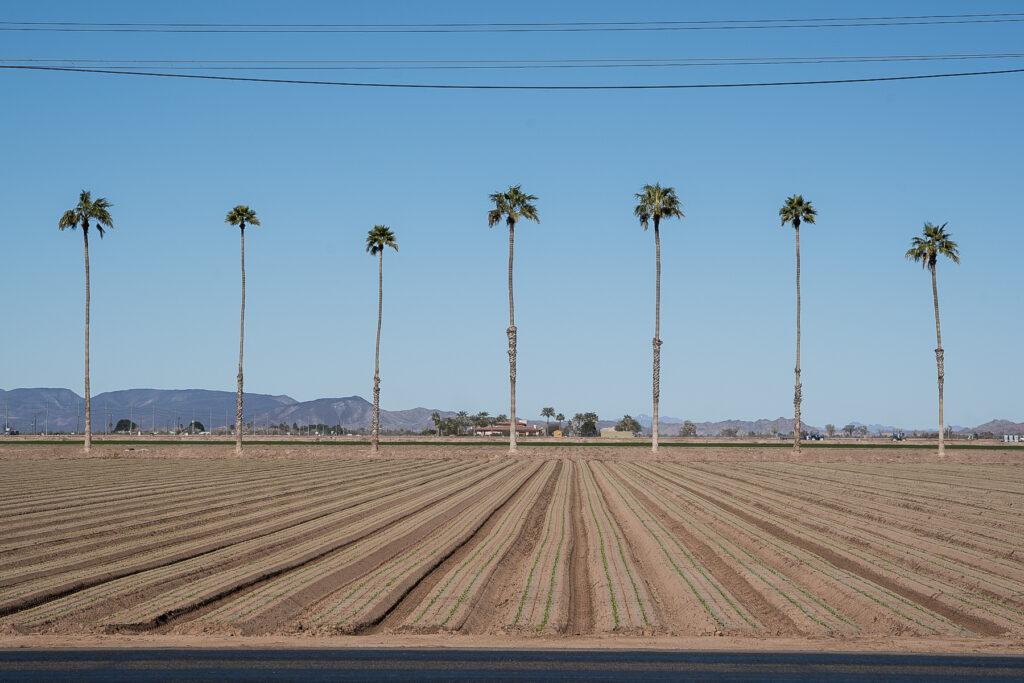
In 2021, Arizona lawmakers, including Dunn, approved a resolution to ask the federal government to resume its formal inquiry into the idea.
Even proponents of this idea acknowledge it would take a long time and couldn’t resolve the short-term possibility that the country’s two largest reservoirs may drop so much they wouldn’t be able to deliver Colorado River water to Arizona and California.

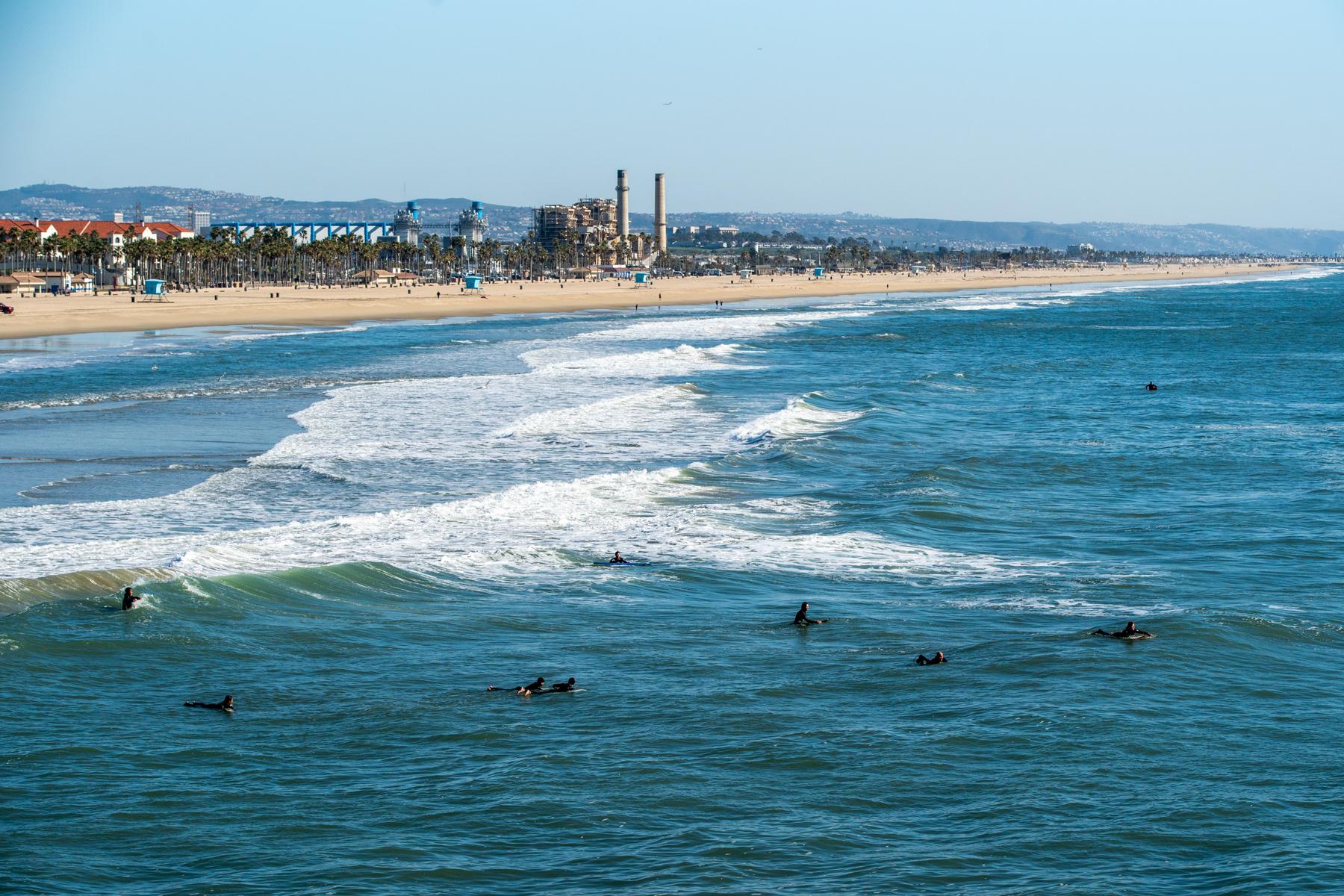
What if we removed salt from seawater?
Humans thirsty for freshwater have always had their eyes on the ocean.
The problem, obviously: Seawater is salty. Too salty to drink, and too salty for most crops. It’s so salty that the water can corrode wood, pipes, pumps and metals.
For thousands of years, people have worked to find ways to remove that salt and keep the fresh water. The favored method today is to use membranes that trap salty particles and let the water pass through. With the help of lots of energy to push the water through the membranes, it’s the basic operation behind most modern-day desalination projects worldwide.
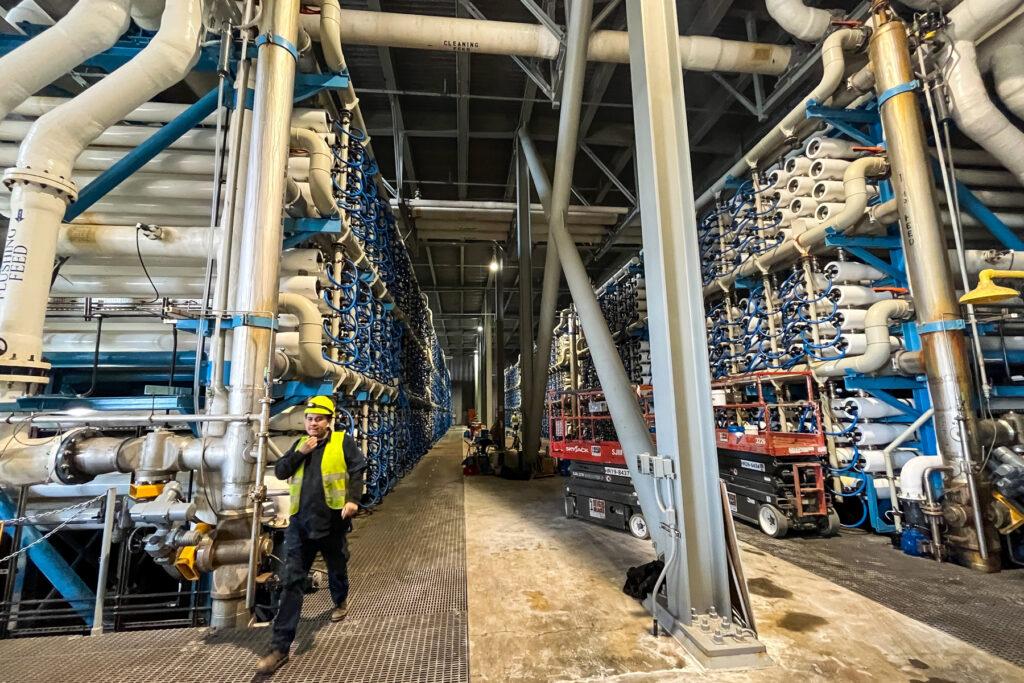
Saudi Arabia went big on desalination nearly 100 years ago. They built their first plant in the 1930s, and the country now gets 60 percent of its water from the ocean.
The U.S. desalination boom that started in the 1970s has grown to include projects in nearly 36 states. California has embraced it the most. Researchers say desalination could eventually provide as much as half of that state’s potable water, and some people in the regional water planning community hope it could lead California cities to stop using Colorado River water in the future.
But desalination has major downsides.
The first is economic: Desalination plants are expensive to build and maintain, and they need a lot of electricity to power the pumps that push seawater through filters. Ratepayers are usually on the hook for those costs, which disproportionately affect low-income households.
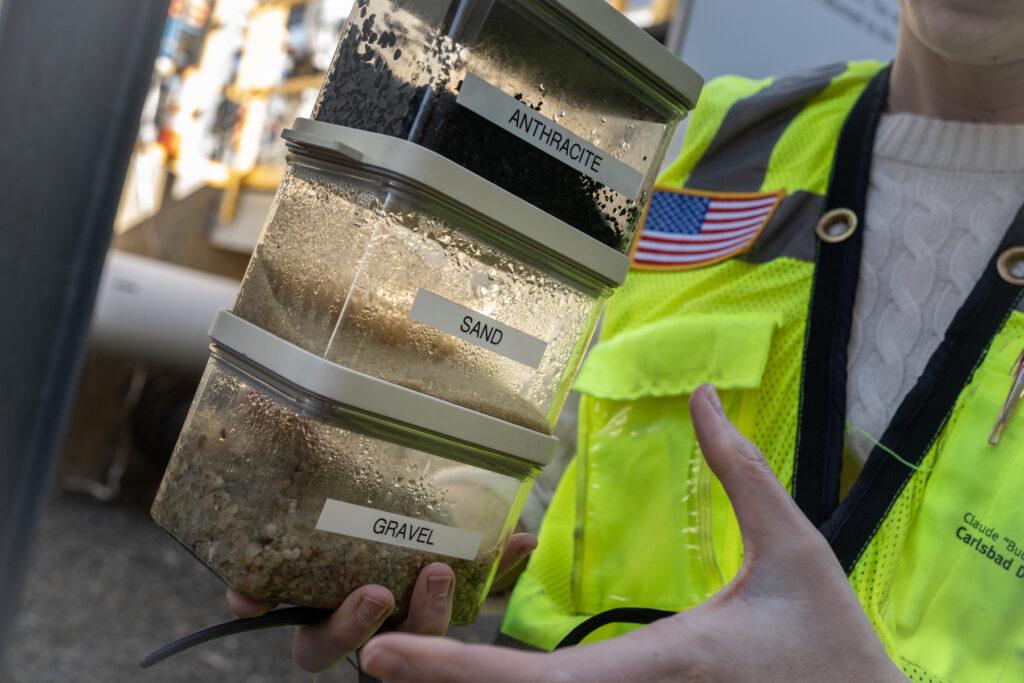
The other major drawback is desalination’s waste problem: The primary desalination byproduct is super salty waste brine that has to be disposed of. Governments and companies that operate desalination plants say this brine can be discharged safely, but environmental groups say the salty plume can kill marine life and disrupt sensitive ecosystems.
However, some proponents say smaller desalination plants and ones built with certain features can offer promising environmental compromises.
In Dana Point, California, the Doheny Ocean Desalination Plant will be built to clean up ocean water for the South Coast Water District. According to plans, the plant will have a smaller footprint and will get 15 percent of its power from a new solar energy project. To prevent the pumps from sucking in and killing marine life, the pipes that draw in seawater will be built under a sandy seabed. Dana Point will also send its salty brine back into the ocean where an already existing wastewater treatment plant does the same.

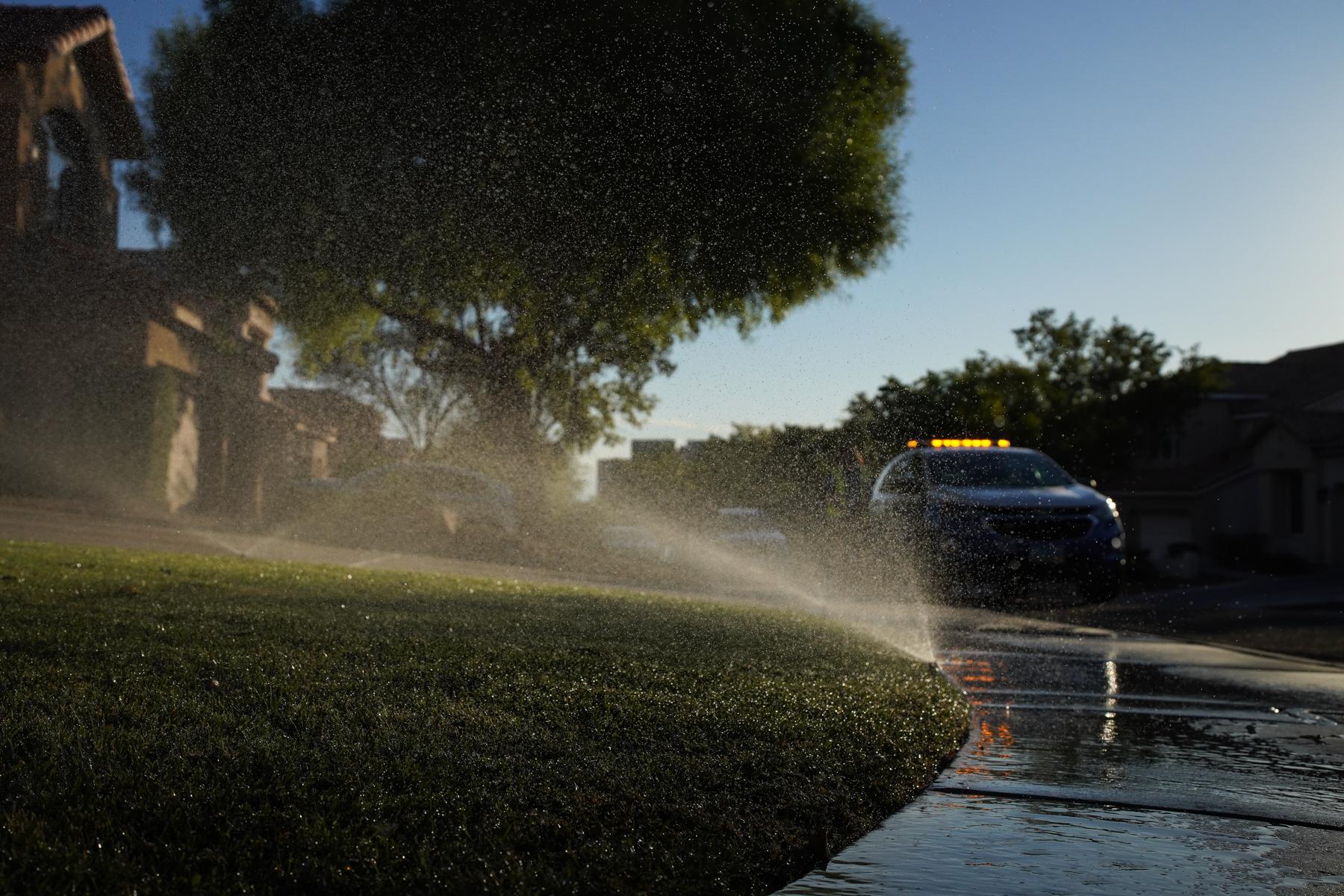
What if we banned grass lawns?
For ideas on how to cut municipal water use, cities along the Colorado River often look to Las Vegas.
Sin City drew people to this area of the Mojave Desert with the promise of year-round sunny weather and green lawns made of Kentucky bluegrass. It was an oasis in the middle of the desert — except it was unsustainable.
In the late 1980s, when several planned communities were being built, the population in Clark County, where Las Vegas resides, was 700,000. Today, that number is closer to 2.3 million. All of those people need water, which comes almost exclusively from the Colorado River supplies stored in Lake Mead.

By the 1990s, the regional water authority in Las Vegas began paying homeowners and businesses to tear out their grass lawns and replace them with native trees, rocks, cacti and artificial grass. They even created a team of water cops to monitor use throughout the city, which includes educating people and handing out fines. But as Lake Mead has dropped to near-emergency levels, Nevada has had to take more drastic measures.
By 2027, Nevadans won’t be able to use Colorado River water to keep decorative grass alive, according to a state law passed in 2021.
Other cities along the Colorado River are paying attention.
By November 2022, 30 water agencies that supply water from Denver to San Diego committed to removing 30 percent of non-functional grass. But the agreement doesn’t include anything binding. Nevada is still the only state that has banned watering ornamental grass lawns with Colorado River water.
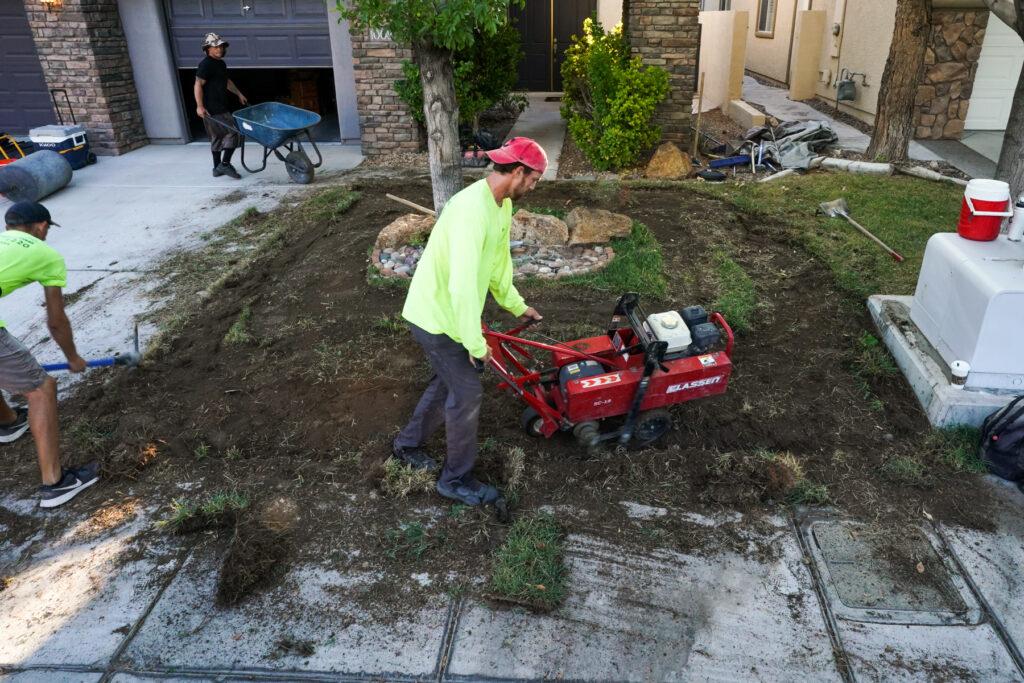
Still, some cities across the Colorado River Basin are realizing that they can do more to save water at a time when every drop counts.
But Vegas’ experience shows the longer those cities wait, the more expensive it’ll be if they do eventually decide to outlaw lawns or require other landscape changes. Since the 1990s, when Nevada first started its cash-for-grass program, the water authority has paid people and businesses close to $300 million to rip out grass.

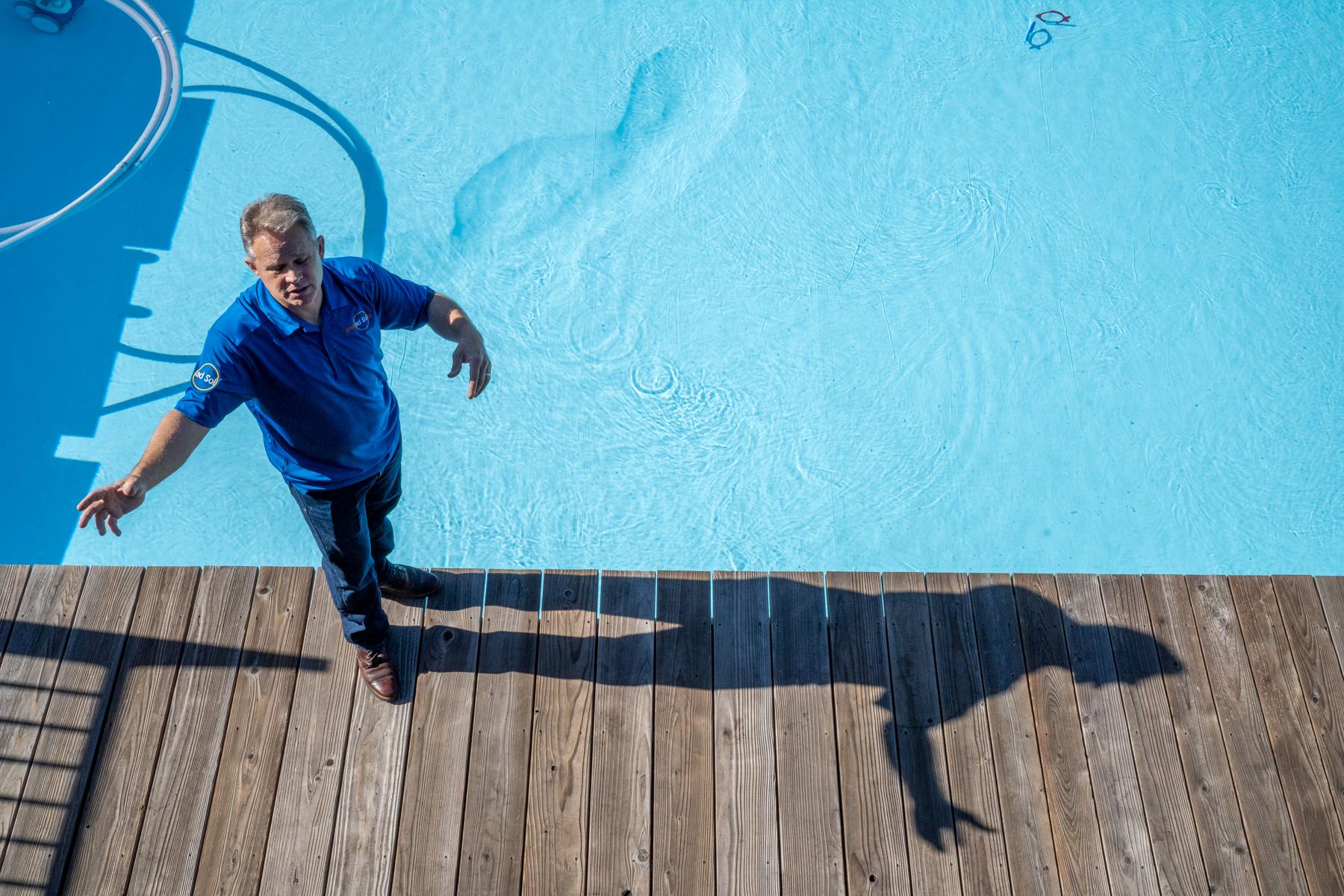
What if we recycled all of our water?
As freshwater gets scarcer in the Southwest, some people are looking to recycle the water we use in our homes and on farms.
Water recycling, or reuse, is a process that cleans wastewater so that it’s either pristine enough to drink or so it’s at least clean enough to water grass and plants outside.
Just 25 years ago, a federal agency deemed wastewater reuse a “solution of last resort” for our drinking water supplies. In Los Angeles in 2000, public opposition to the idea of drinking wastewater helped shut down a plant that the Los Angeles Department of Water and Power had spent $55 million developing.
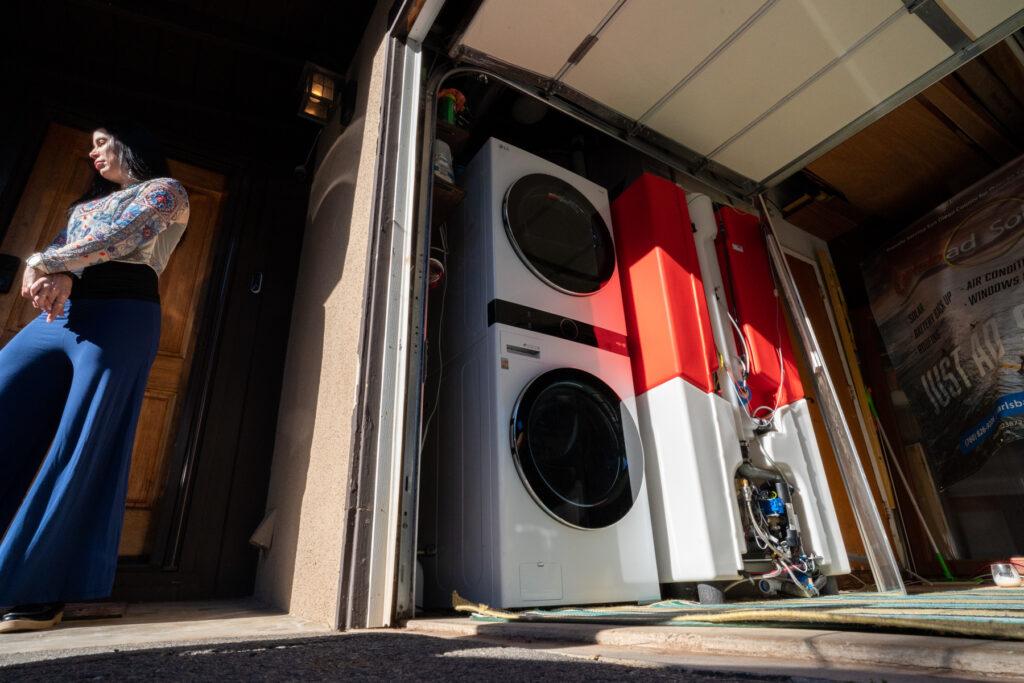
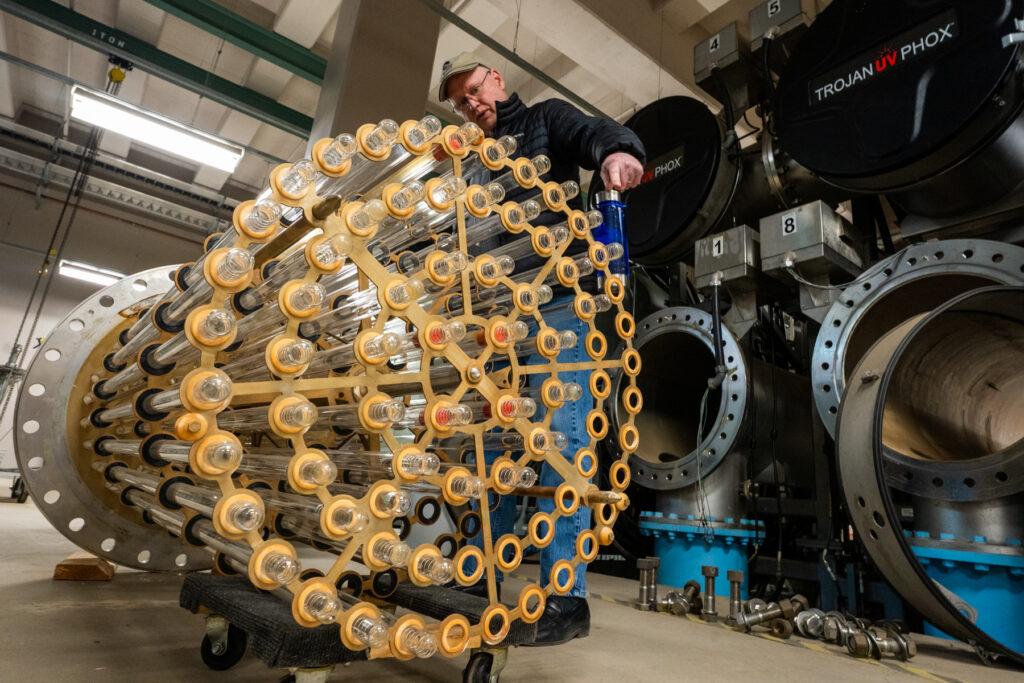
But since then, at least 15 water utilities in Colorado River states — including in Colorado’s Aurora and Castle Rock — have built facilities that clean their own wastewater to safe drinking standards, and they are sending that water back to taps in people’s homes.
More cities could embrace potable reuse in the years ahead because states are individually passing rules for how the water is cleaned and enacting safety standards for delivering it back to taps.
While only a handful of water utilities in the Colorado River region are actively cleaning wastewater to drinking standards, hundreds of them are recycling wastewater for non-potable uses like outdoor watering, including on golf courses.
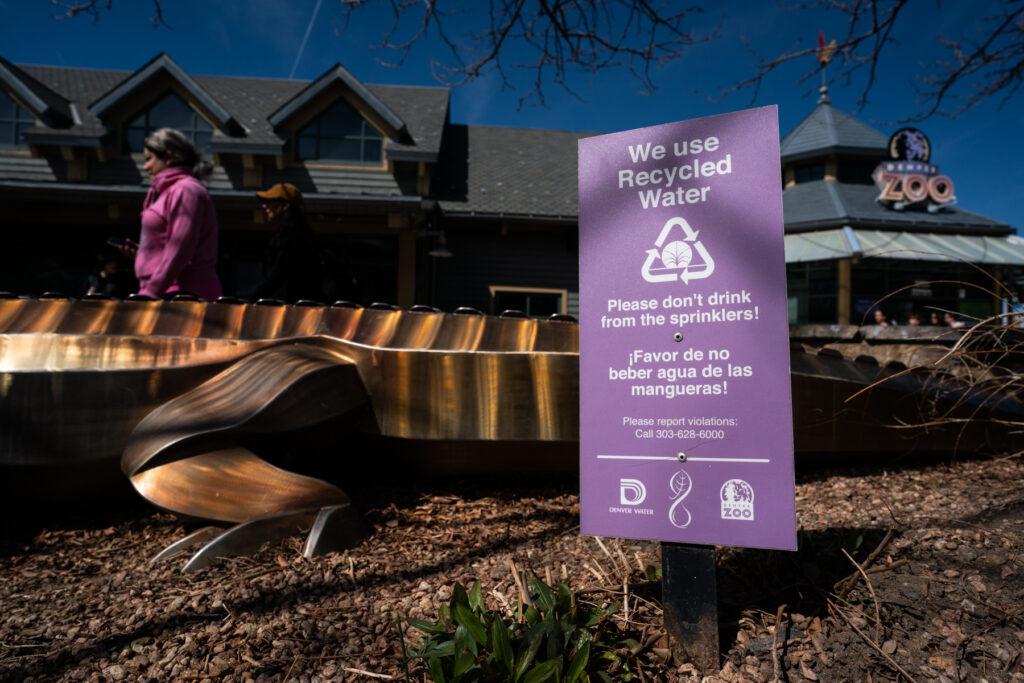
Universally, non-potable recycled water comes through pipes and sprinklers that are painted purple to indicate that the water is unsafe to drink. Not every city can afford to lay down the pipes required to deliver non-potable recycled water, nor find customers to pay for the infrastructure, so there are still hundreds of water utilities that are not recycling their water.
In most of the Colorado River region, individual homeowners and multi-family buildings can set up their own reuse systems. Unlike at the citywide level, they can’t reuse all of their wastewater, but they can separate laundry water and bathwater from toilet and kitchen water. The minimally contaminated water is known as greywater, and homeowners can rig up a way to reuse it outside or clean it through a commercial unit to flush toilets or top off pools.
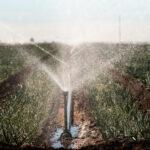

What if we increased the price of water?
Normally when things get scarcer, they get more expensive. But that’s not true with water. Even as climate change makes it less available, we’re not paying a premium price for water.
“Even when you write a check to the local utility, it's not for water. It's for the cost of service,” said Robert Glennon, a water law expert at the University of Arizona. “It's for the cost of the utility to pump the water, treat the water, deliver the water. There is no charge for the commodity of water. None.”
However, there’s evidence that raising the price of water can make people use less. We would have more incentive to conserve or reuse existing water resources if customers had to pay more for a lush lawn.
Tucson, Ariz., experimented with this in the mid-1970s. The city was vastly overusing its groundwater resources and didn’t have access to the Colorado River. It got so bad that the local utility couldn’t guarantee that it could fight fires or deliver water to customers who lived in the hills around town. The sinking water table was also making the ground move, threatening home foundations, sewer pipes, gas lines and anything else buried underground.
This led some members of the City Council in 1976 to raise the price of water. They wanted to encourage conservation and pay for infrastructure to get new water sources.

A few years later, economists at the University of Arizona studied the effects of the change in water rates. They found that people in the city used 45 gallons of water less per day on average. That means people used about a quarter less water than they had before the rates went up.
But the city councilors who had ushered in the changes paid a political price: three were recalled, and a fourth resigned.
“I suspect that what happened to us has scared a lot of people,” said Margot Garcia, who was one of the city officials who was recalled. She surmised that many elected officials are afraid of raising water rates.
Utilities willing to raise water rates need to consider how that might impact low-income residents. One option is to offer subsidies, the way many places do with electricity bills. Another is to keep base rates very low to meet essential water needs. For pricing to effectively influence people’s water use, economists say the prices need to go up precipitously from that base rate to discourage discretionary things like lawns and pools.
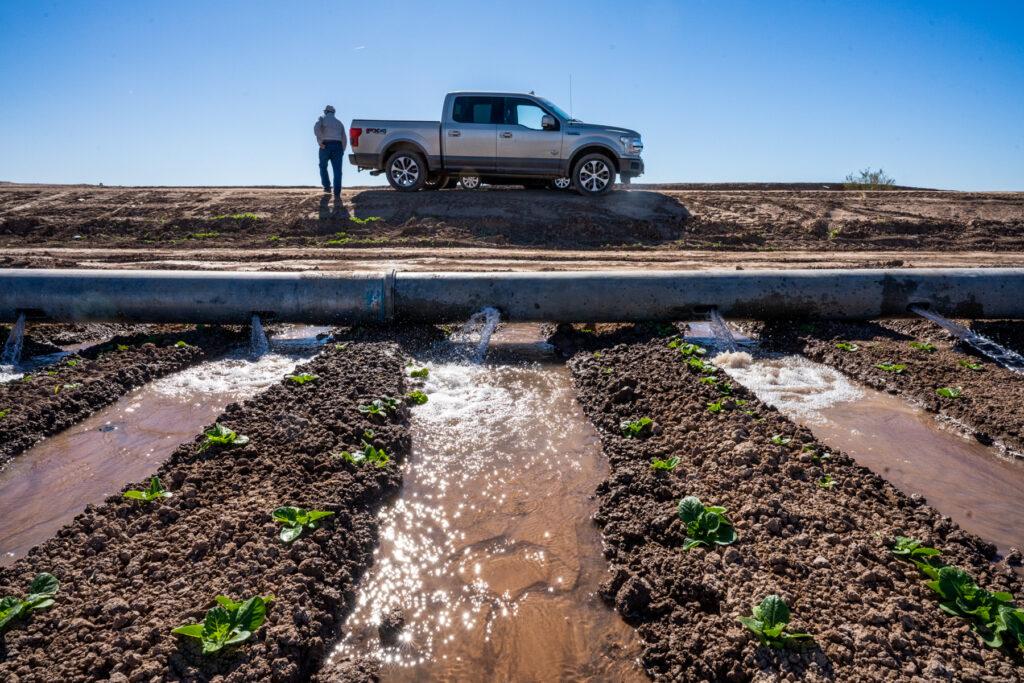
Pricing can be a solution not just for cities but for all users of the Colorado River. The biggest user of all — the Imperial Valley farming district in California — is thinking of raising water rates for the first time in decades to nudge farmers to conserve and to raise funds that can be used to modernize irrigation systems to make them more water efficient.

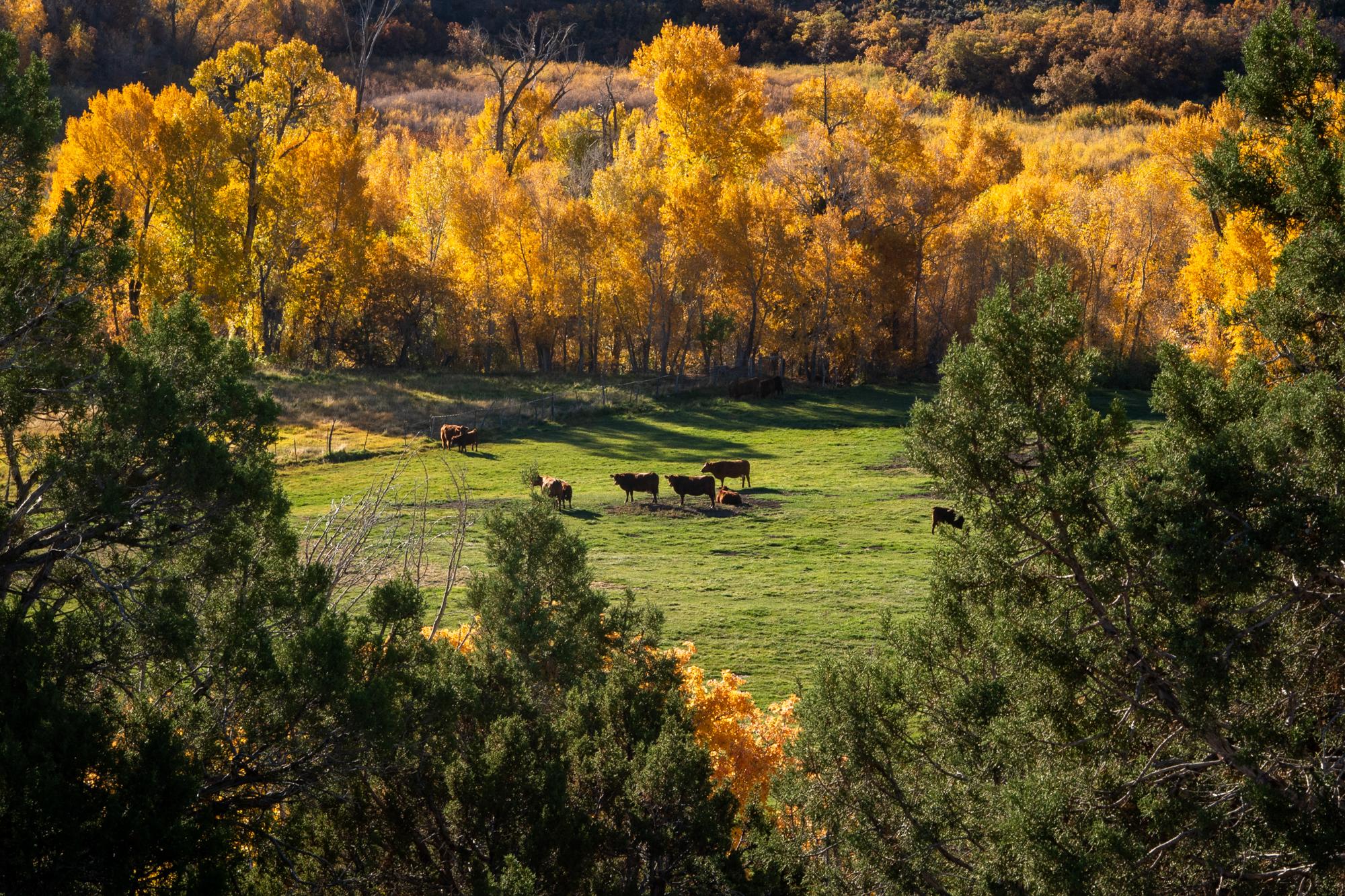
What if we paid farmers to not use their Colorado River water?
Most of the Colorado River’s water is used for agriculture. Farmers and ranchers control some of the basin's oldest and most protected water rights. These two points underscore why some policymakers have endorsed programs that pay farmers and ranchers to keep their water in the river instead of using it for irrigation.
The potential benefits could be substantial, depending on how many farmers volunteer to participate. Enough water could be saved to promote healthy Colorado River flows and preserve water levels in key reservoirs while avoiding mandatory cutbacks in urban and suburban areas.
One key to the success of such a program, advocates say, is ensuring it can pay farmers and ranchers the true value of their water — meaning the payout would need to take into account the financial consequences of getting rid of livestock or letting fields go fallow.
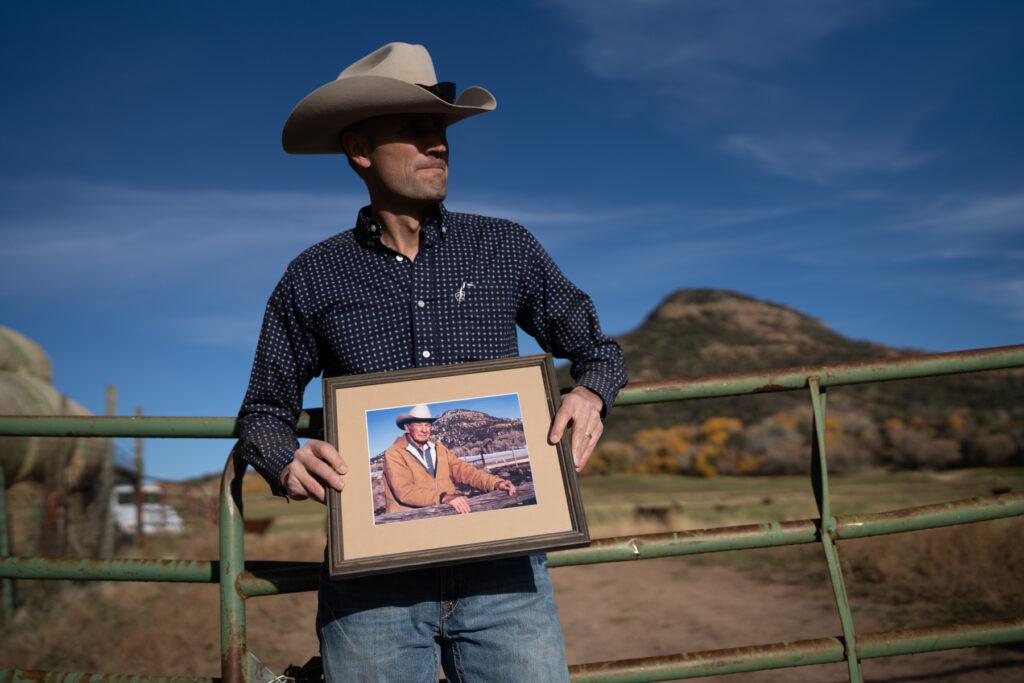
Wildfire, water and wolves: Sign up for our weekly Climate newsletter.
There’s been a lot of interest in this idea recently. The federal government is now allocating millions, and possibly billions of dollars, to programs that pay farmers to pause the use of their water temporarily.
Farmers downstream of Lake Mead can already get paid to keep their water in the reservoir. But many farmers in other areas are reluctant to endorse the idea. This is one reason a proposal for such a program in Colorado and other upper-basin states has failed to gain traction.
Some agricultural producers are also suspicious that these programs have attracted the interest of Wall Street firms that are buying up farmland and water rights. They worry efforts that end up turning water itself into a profitable commodity — instead of the food it grows — could be a long-term threat to farms and surrounding communities.

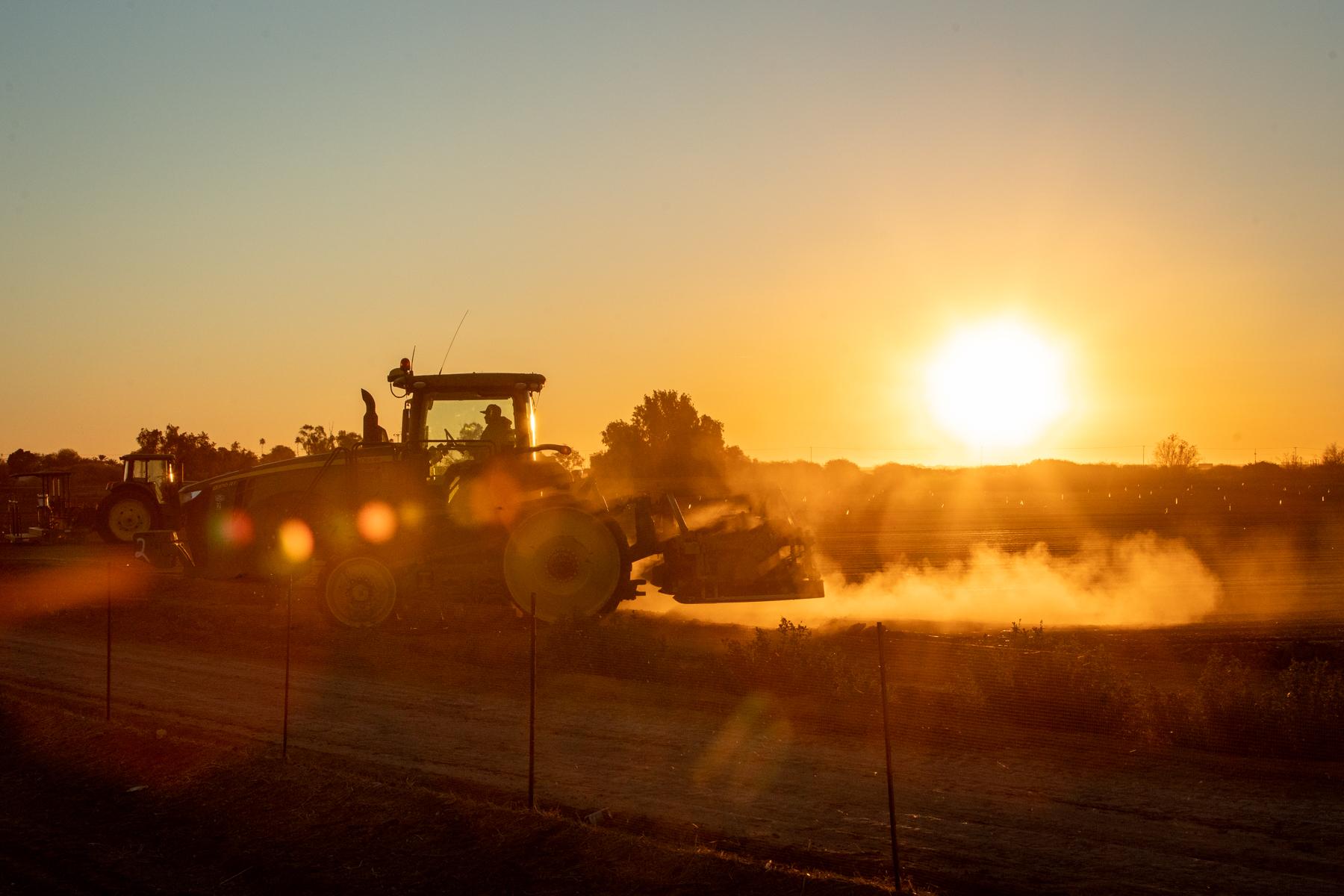
What if we farmed differently?
A lot of the food eaten in the U.S. comes from farms and ranches in the Southwestern desert. Cantaloupe, lettuce, almonds, dates, cherries and many other types of food are all grown in Arizona and California, which often don’t get more than two inches of precipitation a year.
The water that nourishes these crops comes from the Colorado River through an extensive maze of aqueducts and irrigation ditches that create an agricultural oasis in the desert.
These areas are home to many large-scale farms because they have a lot of sun, and the temperature is steady and ideal for growing crops — all of which add up to a long growing season. Desert farmers, including ones who use Colorado River water, can also control when and how much water their crops get.
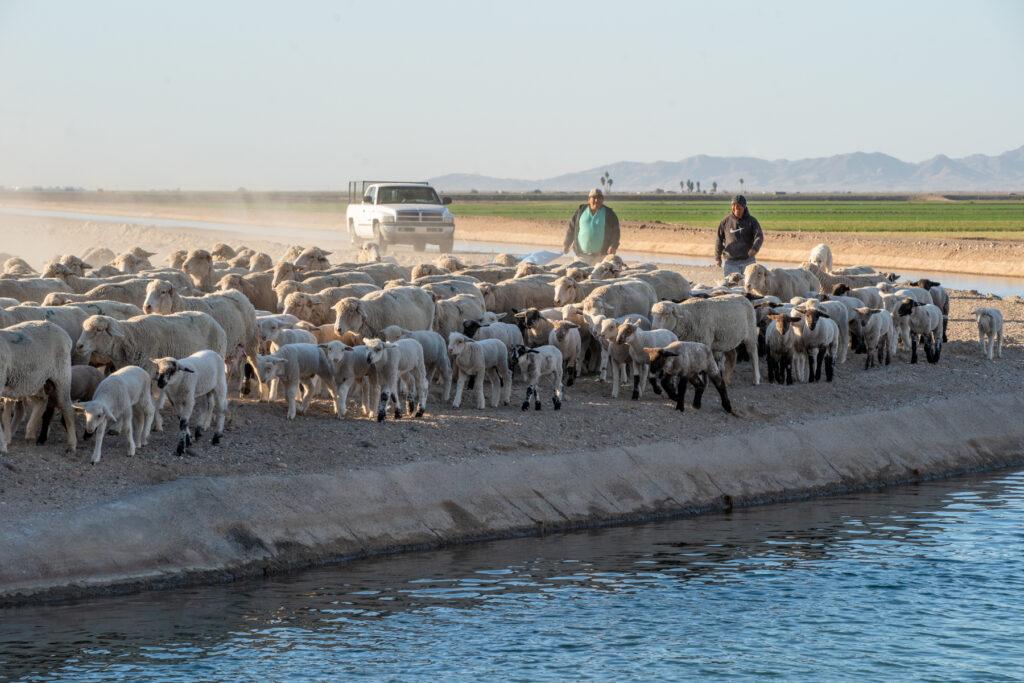
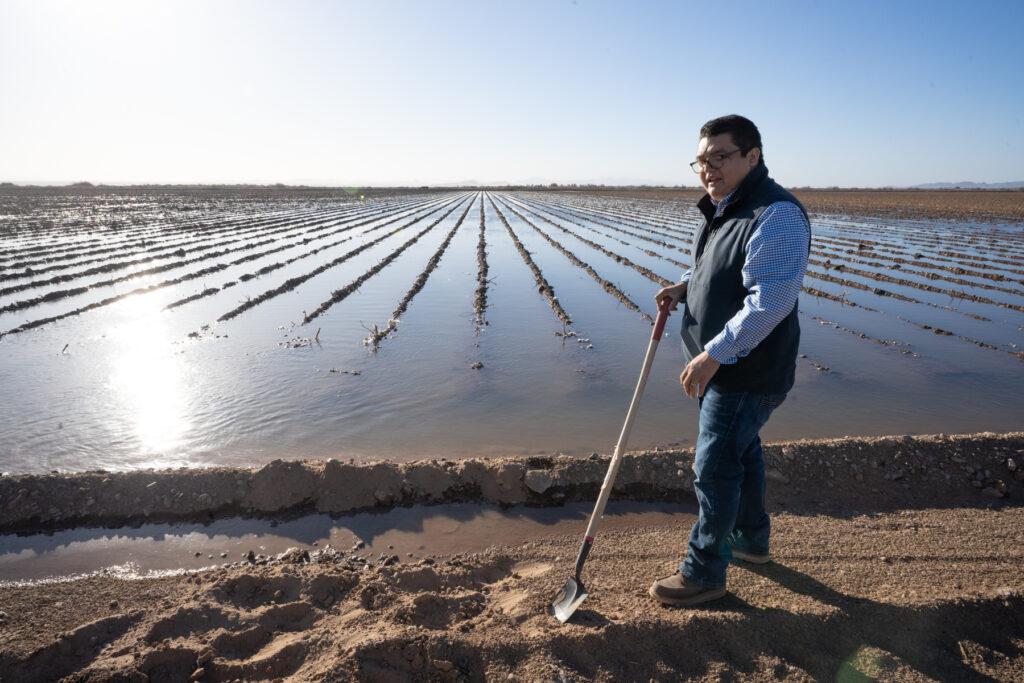
Many farmers in the region water their crops by flooding the fields. It’s an irrigation practice that goes back thousands of years and is particularly effective in ensuring the plants get adequate moisture. But it’s not the most efficient form of irrigation, and it uses a lot of water.
In response, some farmers are looking at ways to better use what little rain falls on the area. To do that, they’re employing technology that can determine the best time of day to water crops and reduce evaporation. Other farmers are going one step further and using drip irrigation, which distributes water directly to the crops.
Another way farmers could reduce their water use would be to switch the crops they grow.
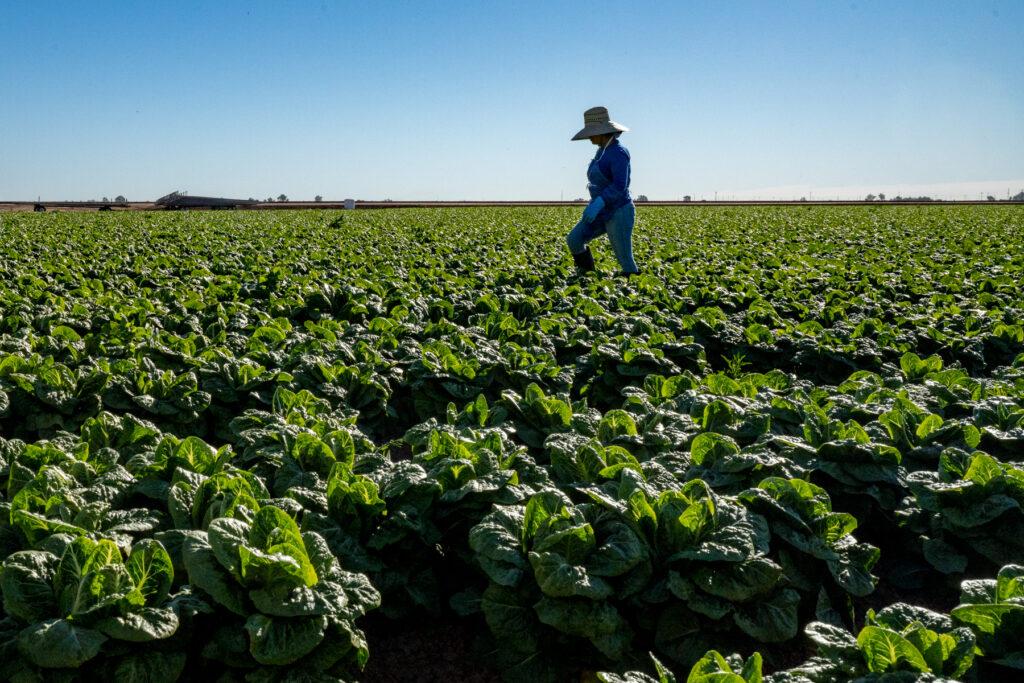
One of the Southwest’s most profitable and widely grown crops is alfalfa, and it is notoriously thirsty. Humans don’t consume this variety of the pea plant directly, but dairy and beef cows do, and they eat a lot of it.
The crop is shipped to feed cattle all over the U.S.; it’s even exported to feed cows in Saudi Arabia, which has prohibited growing the hay domestically to preserve its own water resources.
Some farmers are experimenting with growing other types of crops, including Durum wheat, cotton and produce that doesn’t use as much water. Tire companies like Bridgestone have been investing in growing Guayule, which would create a domestic supply of rubber.
Reporting contributed by Michael Elizabeth Sakas